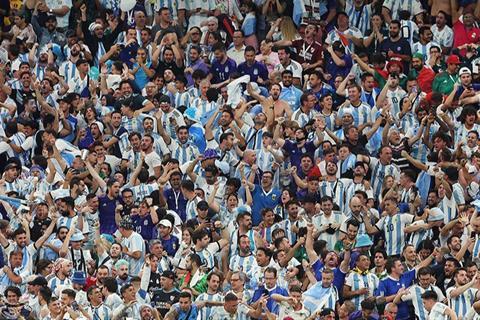The 2022 FIFA World Cup ended with a tight win for Argentina over France on penalties, but it was also a triumph for SARS-CoV-2 with a significant jump in the number of cases, some of which York University researchers say could have been prevented.

New research led by York used the 2022 FIFA World Cup as a case study to help determine the best ways to mitigate virus spread and hospitalizations at mass gatherings in the future. A technique was used to sample initial conditions stemming from possible matches held between visiting teams, which then formed the basis of independent simulations of each game.
The paper, Modelling disease mitigation at mass gatherings: A case study of COVID-19 at the 2022 FIFA World Cup, was published in the journal PLOS Computational Biology.
Pre-travel screenings
Lead author of the paper, York postdoctoral fellow Martin Grunnill, and an academic-industrial collaborative team, including Faculty of Science Distinguished Research Professor Jianhong Wu, found that pre-travel screenings did little to prevent infections and hospitalizations.
Pre-match screening of spectators and match staff, however, with either a rapid antigen test half a day before or with a reverse transcription polymerase chain reaction test one and a half days before a match, was more effective than pre-travel screening. The researchers found doing both pre-travel and pre-match testing had even better outcomes, but what worked best was ensuring all visitors had a COVID-19 vaccination, a second or booster dose, within a few months of departure to the tournament.
“That precaution reduced the rate of infection and particularly the rate of hospitalizations,” says Grunnill.
Peak at quarter final
Prior to the FIFA World Cup, COVID-19 cases and hospitalizations were declining in Qatar but began to rise during the tournament peaking at the beginning of the quarter final.
“The ambitious goal of the partnership research includes developing modelling technologies that can be used to assist in the preparation of major mass gathering events, whether religious or sports related in nature or a major festival,” says Wu. “We hope these platforms can be used to provide input into how to help manage respiratory infection risk for the next FIFA World Cup, hosted by North America, and the Olympic Games in Paris this summer.”
International events
Wu points out that even before COVID-19, large events attracting tens of thousands of people spurred the spread of communicable diseases, sometimes globally.
“In the case of international events like the FIFA World Cup where visitors come from all over the world and return home, there is a higher chance of infections spreading beyond the host country,” says Grunnill.
The work is part of an on-going York-Sanofi collaborative project, funded by the Natural Science and Engineering Research Council of Canada, that aims to developing a generic modelling framework tailored to specific events involving intensive social-economic activities to support preparing those events with minimal risk of disease outbreak and spreading.







No comments yet